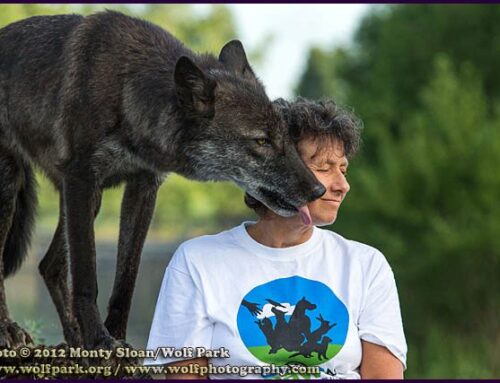 Dogs try. You have to give them at least that much. They try to figure us out, try to do what we want them to do, and most do a darn good job of it even when we don’t make it easy for them. It’s harder for fearful, shy or anxious dogs to sort us out. It’s not easy to be at your thinking best when you’re scared and stressed.
Dogs try. You have to give them at least that much. They try to figure us out, try to do what we want them to do, and most do a darn good job of it even when we don’t make it easy for them. It’s harder for fearful, shy or anxious dogs to sort us out. It’s not easy to be at your thinking best when you’re scared and stressed.
One of the first things I do when I meet any dog is to find out what common languages we share. A dog who notices and cares about the treats in my hand and plops their butt down in front of me and gazes up expectantly, understands. This behavior has worked in the past to get them a treat, and I do not disappoint them. I want them to know that I understand them as well. This, probably more than the treat itself, helps many dogs relax. It provides the same kind of relief you might feel when you’ve been lost in a strange place and someone hands you a road map.
Life is easier for dogs who have a vocabulary that gets them what they want or need.
“If I stare at the slow moving one long enough she will share that sandwich with me.”
“Scratch at the door and the one who couldn’t tell the difference between the scent of boy dog pee and girl dog pee if her life depended on it, will come and open it.”
“Bark when outside and one of the ones that can’t even hear the nest of baby mice in the walls will let me inside.”
It’s up to us to help them learn which behaviors are going to work best to get what they want. And also up to us to help them understand when asking isn’t an option (try to get this across to a frisbee-crazed border collie).
Dogs that are scared have it rough. Not only do their fear and anxiety make it harder for them to learn to communicate with people, there’s a good chance that in the past they have tried and their requests were ignored or disregarded. A dog that lowered their head was still handled, kissed or hugged. A dog that looked away was still approached. A dog that went belly up ended up with a giant hovering over them. A dog that growled was threatened and punished.
We can help dogs out by learning more about canine body language. By doing this we can respond more appropriately to them and become better advocates for them. “No, that dog is not trying to dominate you and become leader of the pack, he’s terrified and doing the only thing he can to convince you to leave him alone.”
Most dogs start by asking nicely, but we shouldn’t expect that they’ll plead with us forever.





